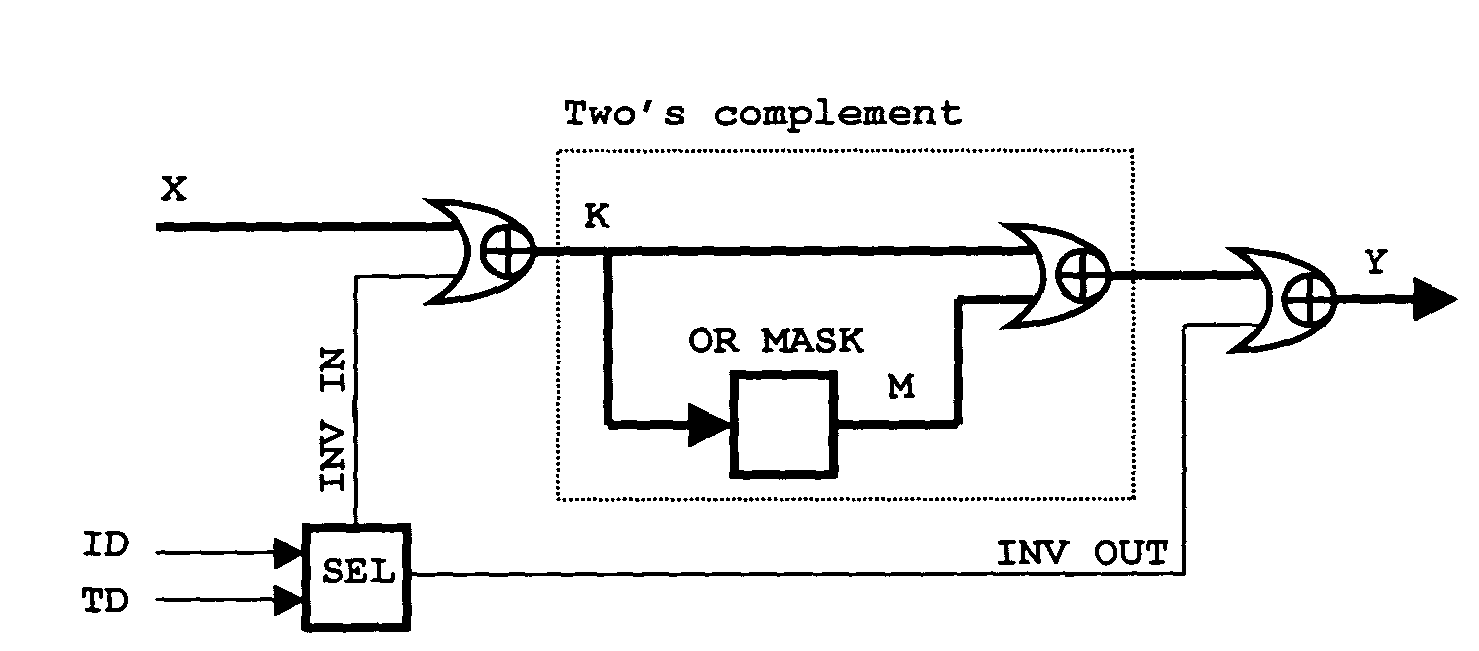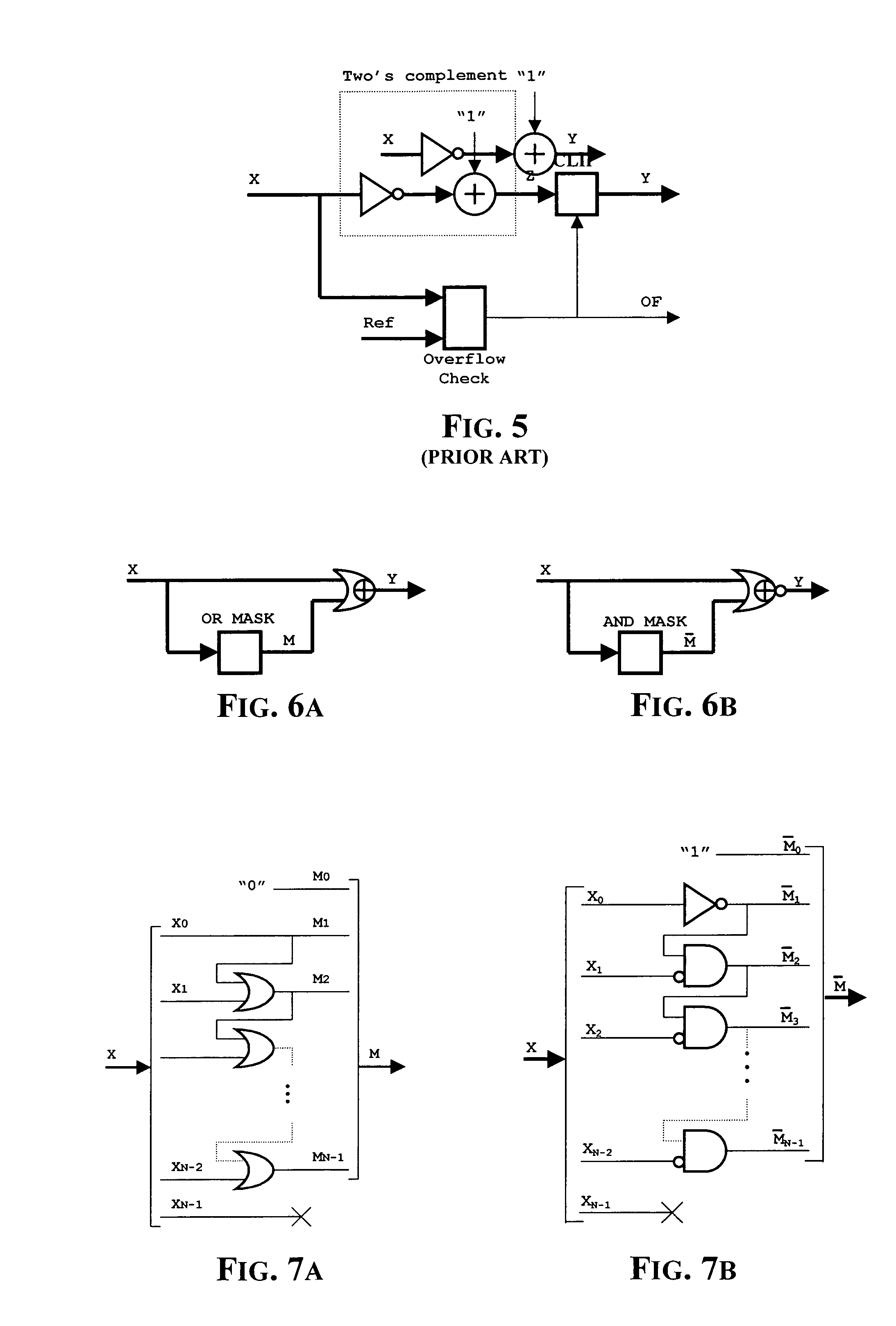Method and relative circuit for incrementing, decrementing or two's complementing a bit string
a technology of two's complementing and bit string, applied in the field of two's complementing circuit and an associated circuit, can solve the problems of unfavorable two's complementing circuit depicted in fig. 5
- Summary
- Abstract
- Description
- Claims
- Application Information
AI Technical Summary
Benefits of technology
Problems solved by technology
Method used
Image
Examples
Embodiment Construction
[0048]Two equivalent embodiments of two's complement circuits implementing the method of the invention are depicted in FIGS. 6a and 6b. They have an auxiliary circuit OR MASK and AND MASK, respectively, input with the N−1 least significant bits of the string X and generating a corresponding auxiliary string M and M of N bits.
[0049]It is worth noting that the auxiliary string M generated by the circuit AND MASK is a negated version of the string M generated by the circuit OR MASK. The two circuits of FIGS. 6a and 6b are thus nearly equivalent.
[0050]According to the method of the invention, with XL-1 being the least significant bit X of the string X equal to 1, the least significant bits of the auxiliary string from the second M1 to the (L+1)-th ML generated by the circuit of FIG. 6a (or 6b) coincide with the L least significant bits of the string X (or with their negated replicas), while the remaining bits are all equal to 1 (or to 0), while the least significant bit of the auxiliary...
PUM
 Login to View More
Login to View More Abstract
Description
Claims
Application Information
 Login to View More
Login to View More - R&D
- Intellectual Property
- Life Sciences
- Materials
- Tech Scout
- Unparalleled Data Quality
- Higher Quality Content
- 60% Fewer Hallucinations
Browse by: Latest US Patents, China's latest patents, Technical Efficacy Thesaurus, Application Domain, Technology Topic, Popular Technical Reports.
© 2025 PatSnap. All rights reserved.Legal|Privacy policy|Modern Slavery Act Transparency Statement|Sitemap|About US| Contact US: help@patsnap.com



